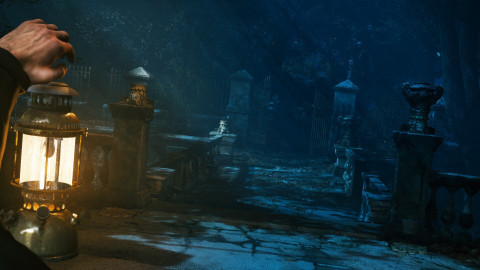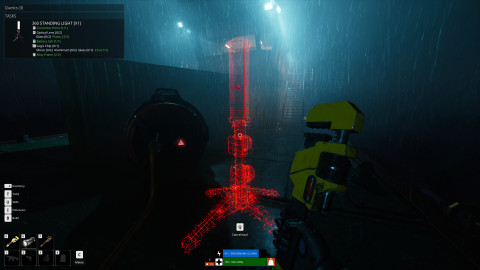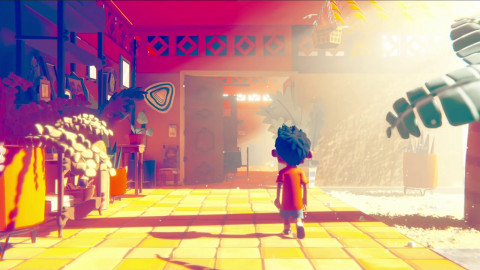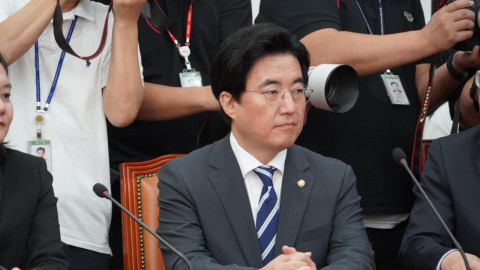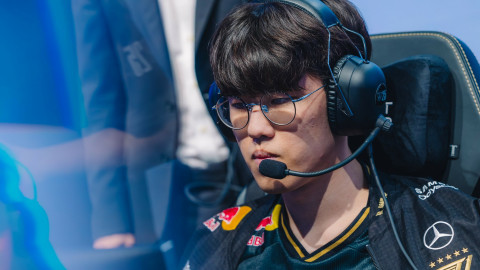
Before its initial trilogy, the Onimusha series etched its mark in the early 2000s PS2 era by marrying Sengoku-period Japan with biohazard-style horror. As it evolved, it built a distinct identity through punishing difficulty, the signature Issen strike, and the distinct Genma-fighting world. Yet after the third installment, it faded into nostalgia—until this spring’s reveal of its full reboot, Onimusha: Way of the Sword. At the recent Play Days showcase linked to Summer Game Fest, Inven attended the presentation and conducted a brief interview. Though release is still over six months away, here’s everything we learned firsthand about the new Onimusha.
Presentation
Onimusha: Way of the Sword is a from-the-ground-up reboot. While the demon-sucking gauntlet, Sengoku-period backdrop, and rampaging Genma remain, classic protagonists such as Samanosuke Akechi or Jūbei Yagyū, Jacques Blanc, and Genma’s premier swordsman Gogandantess have vanished.
Instead, the hero is the real-life Sengoku legend Miyamoto Musashi. Though media often depicts him dual-wielding, here he carries a katana and wakizashi like any samurai. His defining feature is the soul-absorbing glove on his right arm: after carving through foes with blistering swordplay, Musashi uses this gauntlet to drain their spirits—an iconic Onimusha flourish retained in this reboot.

Intriguingly, as the trailer hints, the glove itself harbors consciousness. Much like Kratos’s Mimir, he converses with it throughout the journey, delivering narrative beats and gameplay guidance in a more immersive way. Compared to the trilogy’s Oni Gauntlet—which merely functioned as a level-up conduit—this is a quantum leap.
Modernized Combat and Camera
The most immediately noticeable change is the camera: the series’ old quarter-view has given way to an over-the-shoulder third-person perspective, aligning it with contemporary action titles. Combat similarly evokes modern blockbusters, straddling the Soulslike genre without fully embracing it—more akin to God of War than Elden Ring.

But the true revolution lies in the swordplay itself. As befitting its subtitle, Way of the Sword stages exquisitely detailed nihontō duels. When an enemy strikes from behind, Musashi doesn’t snap-turn and parry; instead, he smoothly redirects the blade over his shoulder. Sparks may fly as steel scrapes steel, and seamless chain animations can dispatch multiple foes in a single flourish—delighting the eye on every encounter. Environmental interaction deepens the tactics: Musashi can flip tables into cover or hurl debris to fracture enemy formations, adding a layer of battlefield chess to the sword action.
Longtime devotees will be relieved to learn that the Issen remains, though its heft is dialed down. Even as a veteran who cleared entire Onimusha titles with Issen-only runs, I found the move’s core concept—evading at the last second to unleash a one-hit kill—intact. It now ties into a per-enemy “groggy gauge,” reminiscent of Sekiro’s posture system.

Monsters and bosses alike possess this gauge. Once fully depleted, players can execute a potent finisher. Uniquely, two executions are available: one inflicts massive damage, the other extracts healing souls to restore health and resources. If you enter a boss fight already wounded, opting for recovery over raw power becomes a strategic choice.
Even Musashi’s eternal rival Sasaki Kojirō appears, wielding the Ganryū technique. In the roughly ten-minute presentation, it became clear that Onimusha: Way of the Sword is unapologetically combat-centric. In an era where many action games chase the Soulslike trend, this reboot stakes its claim on pure swordplay joy rather than punishing challenge for its own sake. Superficially it may resemble other titles, but in execution, every clash feels distinct. The full picture, of course, awaits next year’s launch.
Interview
After the presentation concluded, we held a brief Q&A with Onimusha: Way of the Sword’s director, Satoru Nihei, and producer, Akihito Kadowaki.
Q. First, I’d like to ask about the protagonist, Miyamoto Musashi. He appears in many different guises across various media; in the world of Onimusha, what kind of person is Musashi?
In Onimusha: Way of the Sword, Miyamoto Musashi is portrayed as a young warrior on the journey to become the greatest swordsman. He hasn’t yet achieved mastery and travels in search of ever-stronger foes. Along the way, he acquires a gauntlet that entangles him with the Dark Realm.

Musashi’s narrative is one of the work’s core pillars. Through the scenario, we endeavored to highlight and convey his many very human qualities.
Q. A wealth of action games has been released recently. What sets Onimusha: Way of the Sword apart from other titles in the genre?
There are two standout features in this installment. First is the series-defining Soul Absorption system. It isn’t merely a means to gather resources for healing or upgrades; players can employ Soul Absorption in a variety of creative ways throughout the game.

The second is its sword-based combat. We’re confident we’ve crafted action that is far more fluid and nuanced than what you typically see. The very act of dueling enemies is intended to be a deeply satisfying gameplay element in itself.
Q. Through the presentation, we confirmed that the Issen remains intact. How does the Issen in this title differ from its past incarnations?
In this game, the Issen is definitely easier to execute than before. However, because making it more accessible has yielded more complex combat scenarios overall, we’ve kept the general challenge level roughly the same. For instance, in addition to Issen you now have a parry-and-counter system, so players must master when and how to respond to enemy strikes.
Q. The combat footage in the presentation mostly showed Musashi wielding a single sword. In earlier entries, the hero used a variety of weapons—are there really no other armaments in this game?
Other weapons exist, but only as abilities rather than equipment. The trailer showed him smashing through barriers with dual war-clubs, and the presentation featured a rapid assault using a pair of short blades. Nonetheless, as an equippable weapon Musashi always uses a single sword; the more Souls he absorbs, the more weapon techniques he can unleash.

Q. How does this title relate to the previous trilogy?
Onimusha: Way of the Sword is an entirely new story with new characters—none of the prior cast or settings appear. We have placed several visual nods for longtime fans within the game, but fundamentally it has no narrative ties to the past trilogy.
Q. Will Onimusha: Way of the Sword include any online features?
No. This is being developed as a 100% single-player experience.
Q. Finally, do you have any message for fans looking forward to Onimusha: Way of the Sword?
Though a great deal of time has passed, we’re overjoyed to present a new Onimusha title. Whether you’re a veteran of the earlier series or a newcomer discovering Onimusha for the first time, we will polish this game to ensure everyone enjoys their experience up to release. Please look forward to it!

This article has been translated and edited for brevity and clarity.
Sort by:
Comments :0


